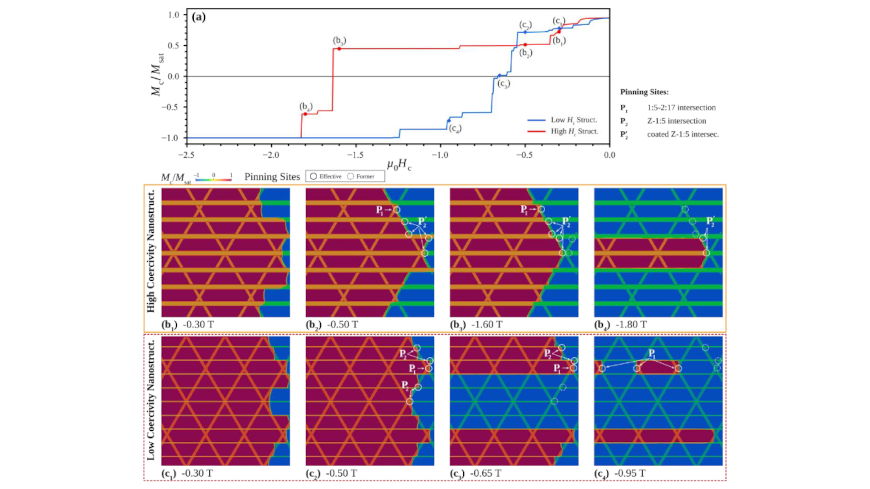Towards engineering the perfect defect in high-performing permanent magnets
New Preprint on “arXiv”
2023/07/28

Authors: S. Giron, N. Polin, E. Adabifiroozjaei, Y. Yang, A. Kovács, T. P. Almeida, D. Ohmer, K. Üstüner, A. Saxena, M. Katter, I. A. Radulov, C. Freysoldt, R. E. Dunin-Borkowski, M. Farle, K. Durst, H. Zhang, L. Alff, K. Ollefs, B.-X. Xu, O. Gutfleisch, L. Molina-Luna, B. Gault, K.P. Skokov
Permanent magnets draw their properties from a complex interplay, across multiple length scales, of the composition and distribution of their constituting phases, that act as building blocks, each with their associated intrinsic properties. Gaining a fundamental understanding of these interactions is hence key to decipher the origins of their magnetic performance and facilitate the engineering of better-performing magnets, through unlocking the design of the “perfect defects” for ultimate pinning of magnetic domains. Here, we deployed advanced multiscale microscopy and microanalysis on a bulk Sm2(CoFeCuZr)17 pinning-type high-performance magnet with outstanding thermal and chemical stability. Making use of regions with different chemical compositions, we showcase how both a change in the composition and distribution of copper, along with the atomic arrangements enforce the pinning of magnetic domains, as imaged by nanoscale magnetic induction mapping. Micromagnetic simulations bridge the scales to provide an understanding of how these peculiarities of micro- and nanostructure change the hard magnetic behaviour of Sm2(CoFeCuZr)17 magnets. Unveiling the origins of the reduced coercivity allows us to propose an atomic-scale defect and chemistry manipulation strategy to define ways toward future hard magnets.
Link to Article
Preprint submitted on 28 Apr 2023 (v1), last revised 4 Jun 2023 (this version, v2)



